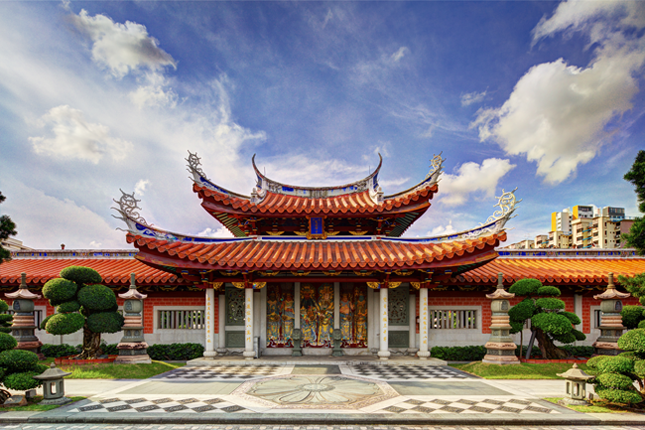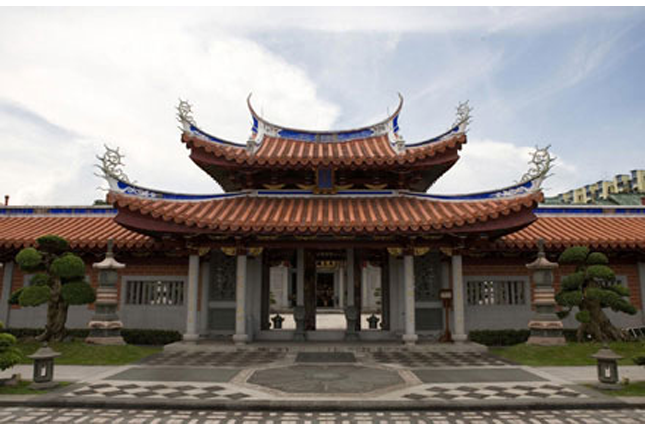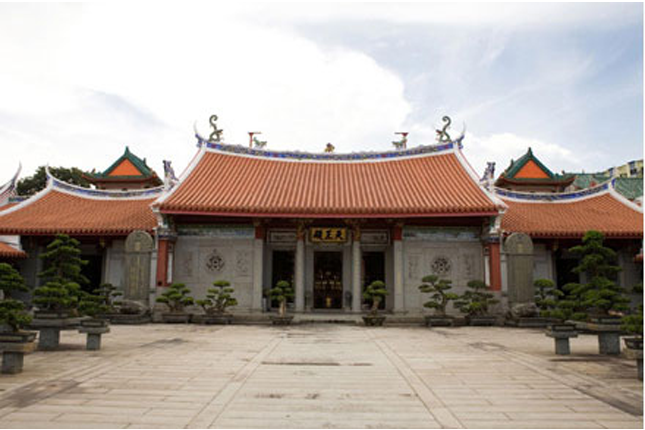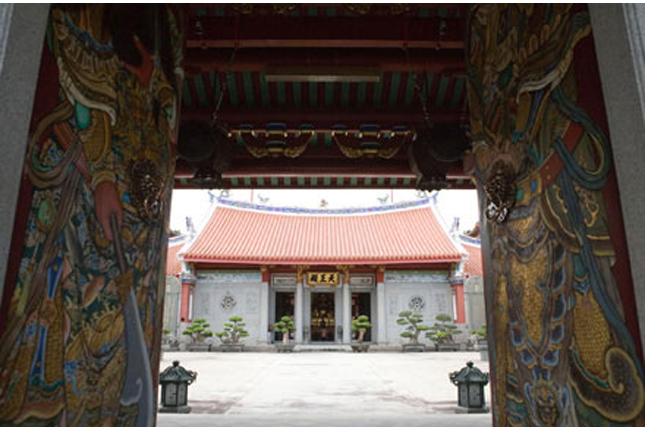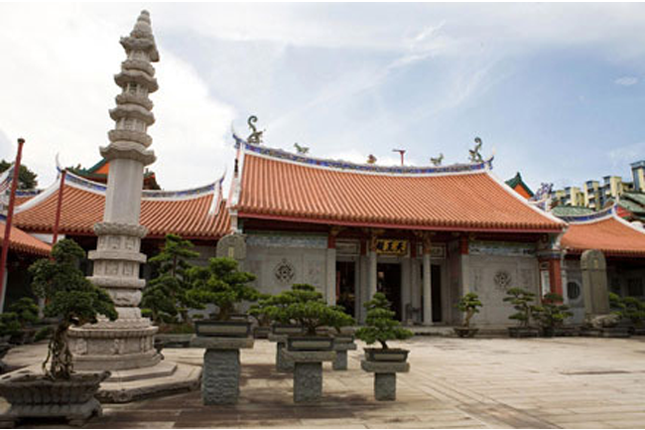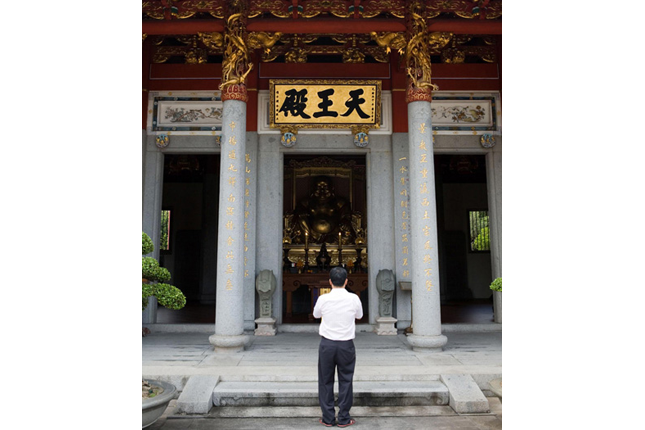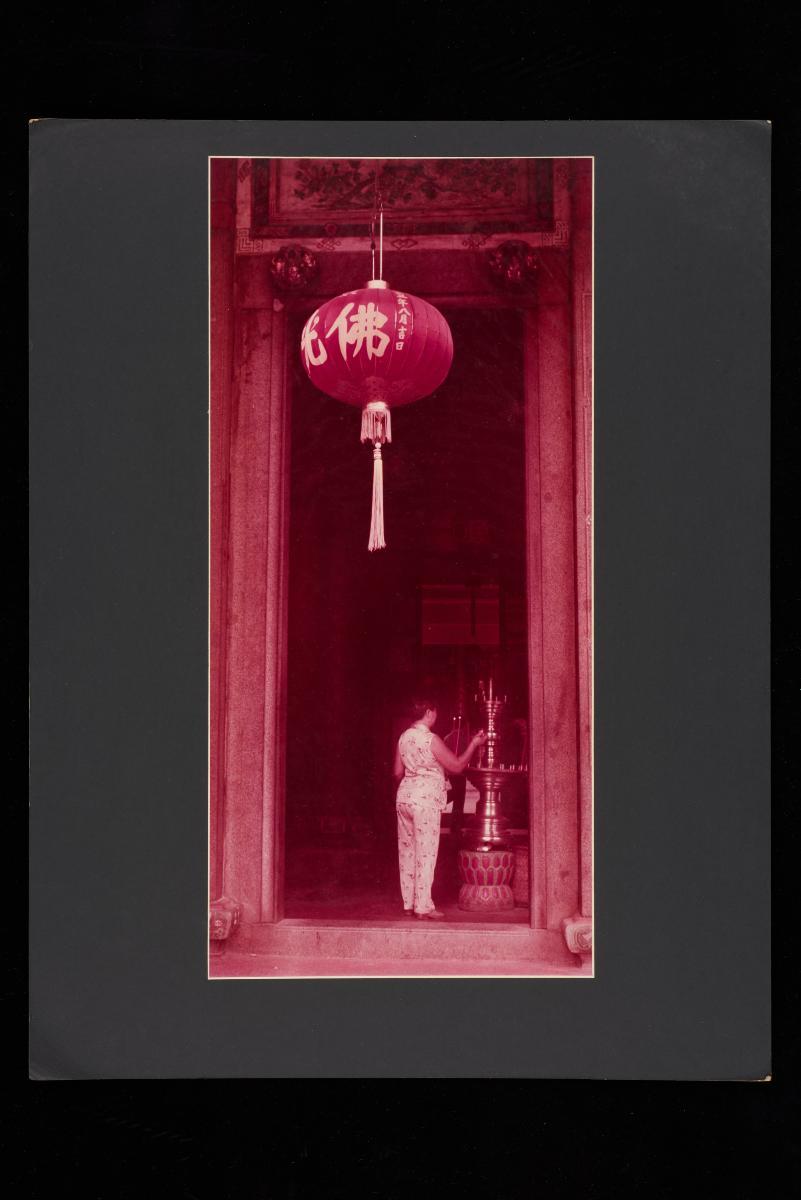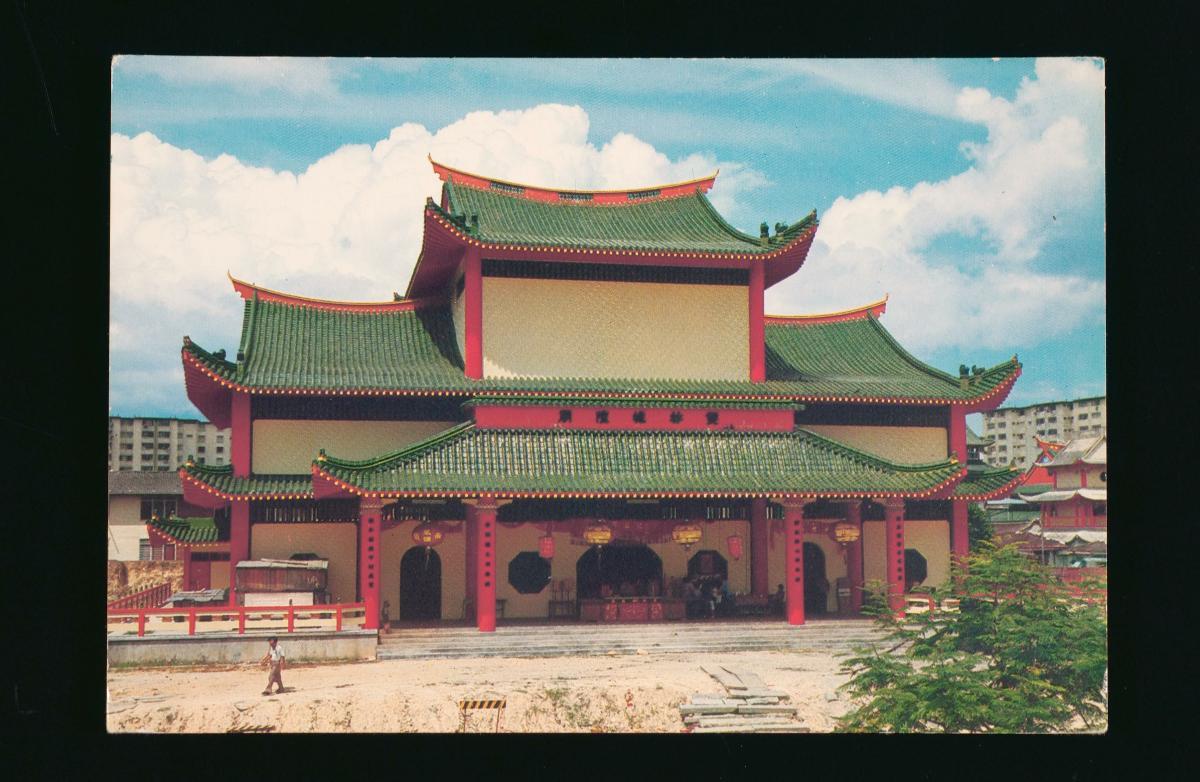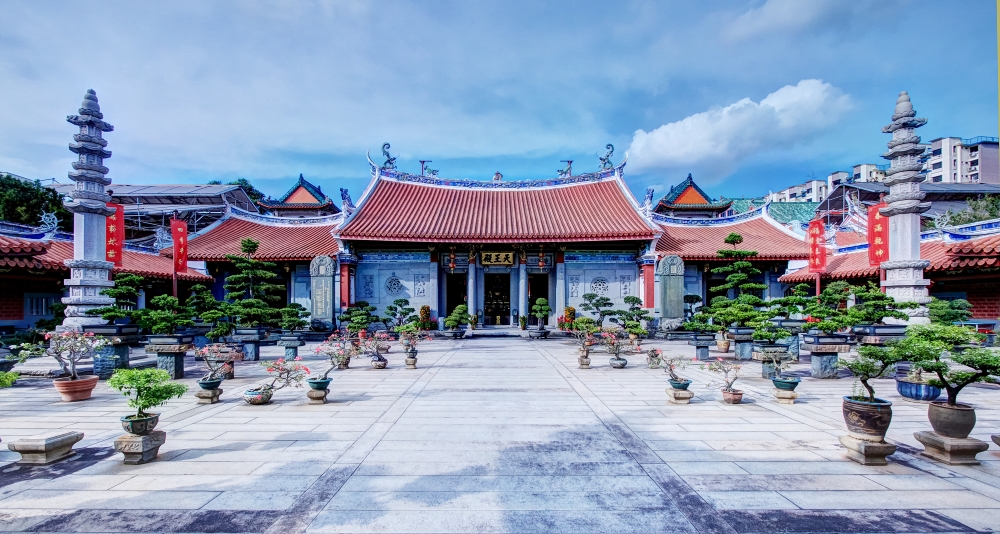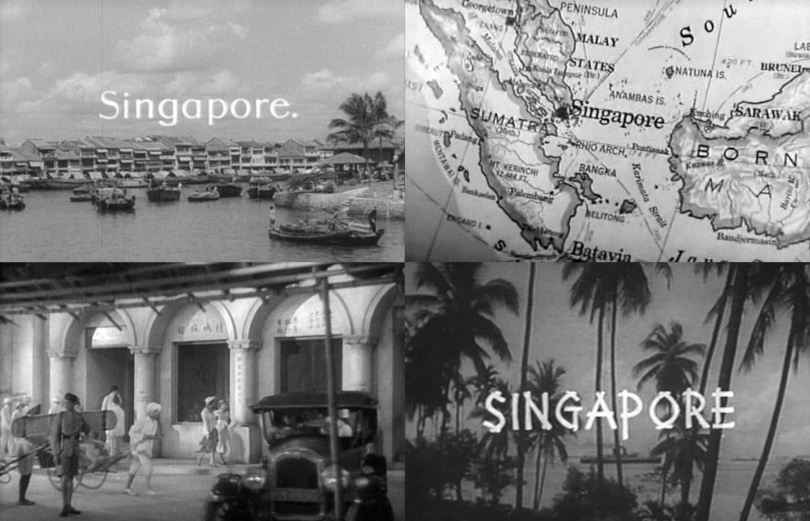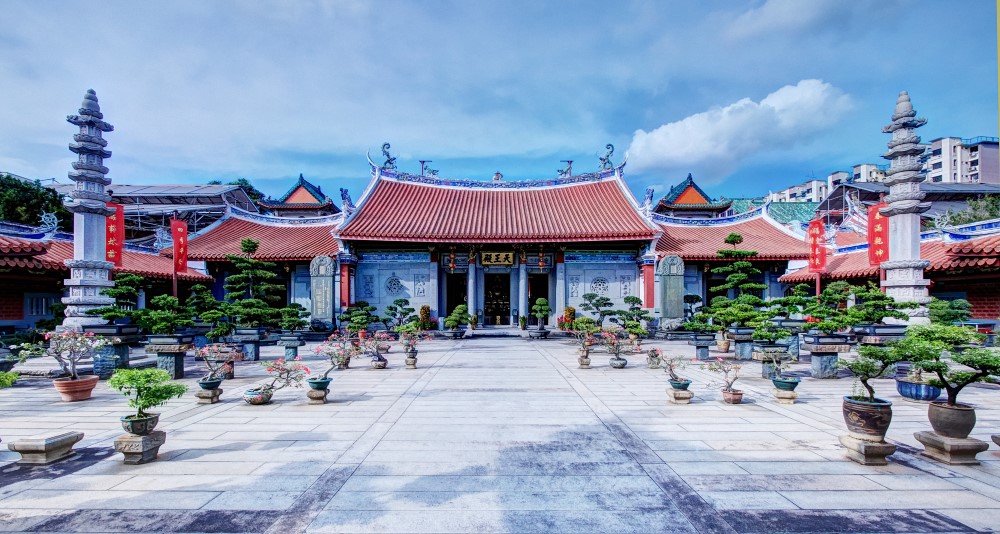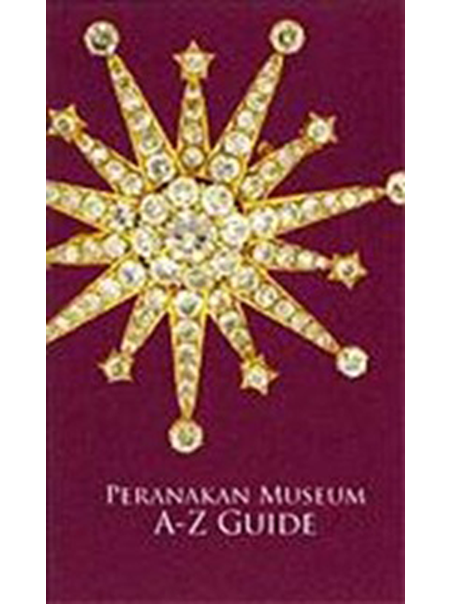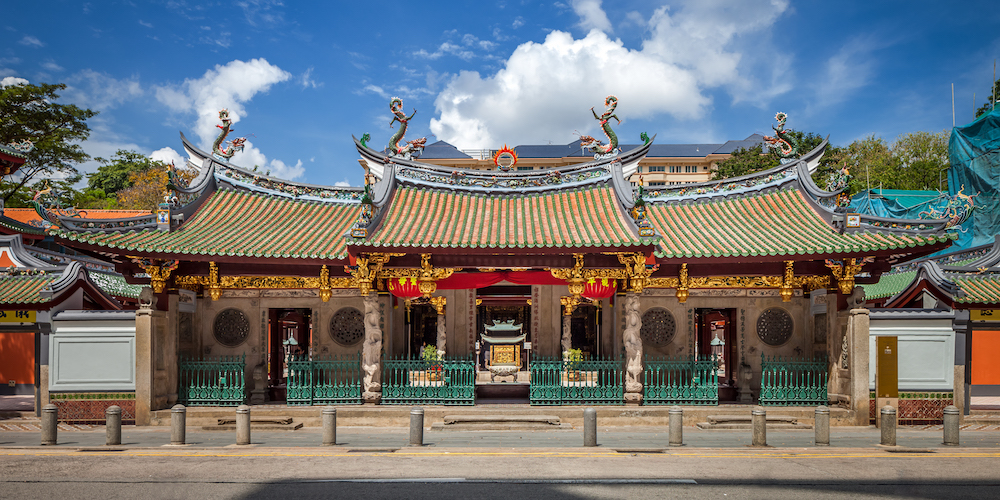The traditional architecture of Lian Shan Shuang Lin Monastery (莲山双林寺) – or ‘Twin Grove Monastery on Lotus Hill’ – stands out amidst the modern high-rise apartment blocks in the Toa Payoh neighbourhood. The monastery complex houses one of Singapore’s oldest Buddhist temples and testifies to the spread of Mahayana Buddhism in the region.
Mystical Dream
The founding of Lian Shan Shuang Lin Monastery is attributed to Low Kim Pong (刘金榜), a successful merchant from Fujian Province, China, who made a fortune in Singapore through his herbal and private banking businesses. One night in 1898, Low dreamt of a bright golden light emanating from the west on the sea. The next morning, he was amazed to learn that his son had a similar dream. Seeing this as an omen, Low and his son spent their day waiting at the waterfront.
Just before sunset, a boat approached the shore. Twelve Buddhist monks and nuns, who were on their return journey to China from a six-year pilgrimage to India, Ceylon (today’s Sri Lanka), and Burma (or Myanmar), disembarked from the boat. Low saw this as a fulfilment of his dream. He was so inspired that he pleaded with the clergy to stay, even pledging to construct a Buddhist monastery for their use.
On 7 May 1900, Low conveyed 12 acres of his land in Toa Payoh to Venerable Xian Hui (贤慧), one of the monks on the boat, and invited him to be the abbot of the new monastery. Construction began once the building plans were approved by the authorities. While Low bore much of the building cost, he also invited members of the public to make donations to the project.
Mahavira Hall
The Mahavira Hall, or Daxiong Baodian (大雄宝殿) was built in 1904 and is the main prayer hall of Lian Shan Shuang Lin Monastery. It housed the images of Shakyamuni (释迦牟尼, Siddhartha Gautama), Bhaisajyaguru (药师如来, ‘Medicine Buddha’) and Amitabha (阿弥陀佛, ‘Buddha of the Land of Ultimate Bliss’).
Tian Wang Dian
A year later, the entrance hall was constructed. The entrance hall is named Tian Wang Dian (天王殿, ‘Hall of Heavenly Kings’) for its four imposing statues of the Heavenly Kings, namely Dhrtarastra, who carries a pipa (琵琶, Chinese lute); Virulhaka, who wields a sword; Virupakkha, who has a serpentine creature in his right hand; and Vaisravana, who holds an umbrella. These statues flank the well known Maitreya (弥勒菩萨, commonly known as the ‘Laughing Buddha’).
Other Structures
There are several other buildings in Lian Shan Shuang Lin Monastery, including the Dharma Hall, Drum Tower, Bell Tower, and the monastic living quarters. Completed in 1903, the original Dharma Hall was the first building in the monastery compound and was used to teach Buddhist doctrines. It was later rebuilt in the 1970s, as the timber had rotted and the building was found to be structurally unsound. The Drum Tower and Bell Tower were both completed in 1907.
Architecture and Furnishings
The monastery is modelled after Xi Chan Monastery in Fuzhou, China, and is a rare example of a cong lin (丛林) monastery in the region. Monastic discipline is cultivated by the standard cong lin monastery layout and the sounding of ritual instruments in the Drum Tower and Bell Tower, which announces the prescribed daily routine of the monastery.
Lian Shan Shuang Lin Monastery was constructed in the traditional Hokkien style, with typical upturned ‘swallow-tail’ end sweeps on either side of the roof ridges. The elaborate decorations adorning the roof were made with a special technique called jian nian (剪粘), which literally means ‘cut and paste’. Colourful ceramics were carefully cut into mosaic-size pieces and pasted to create beautiful figures and reliefs. Similar craftwork can be seen in other Chinese temples in Singapore, including Thian Hock Keng, Hong San See, Tan Si Chong Su, and Yueh Hai Ching Temple.
A closer examination reveals the incorporation of three distinct Hokkien architectural styles – from Fuzhou, Quanzhou, and Zhangzhou in Fujian Province specifically – into the design of the monastery’s many structures. These three styles are particularly evident on the roofscape of the monastery. Sharply curved corners on the roof are characteristic of Fuzhou architecture. On the other hand, buildings designed in the Quanzhou style feature larger and sturdier roofs with corners that curve at a gentler gradient. Both styles are featured in the double-tier roof of the Mahavira Hall; the upper tier is Fuzhou style, whereas the lower tier is Quanzhou style. The roofs of Tian Wang Dian adopt the Zhangzhou style, which is very similar to the Quanzhou design, except that the former has a steeper roof slope, as well as a more elaborate roof truss system.
The delightful blend of various architectural styles bears testimony to the support Lian Shan Shuang Lin Monastery has received over the years from members of the Chinese communities who hailed from these areas in Fujian Province. Numerous intricate and elaborate carvings can be found throughout the monastery.
Lian Shan Shuang Lin Monastery Today
In 1991, Lian Shan Shuang Lin Monastery embarked on a major 11-year renovation and restoration project to return the century-old monastery complex to its original glory and splendour. Today, monks reside in the rear halls, and the monastery remains a popular place of worship for Buddhists in Singapore.
The Mahavira Hall and Tian Wang Dian were gazetted collectively as a National Monument.
Our National Monuments
Our National Monuments are an integral part of Singapore’s built heritage, which the National Heritage Board (NHB) preserves and promotes for posterity. They are monuments and sites that are accorded the highest level of protection in Singapore.




